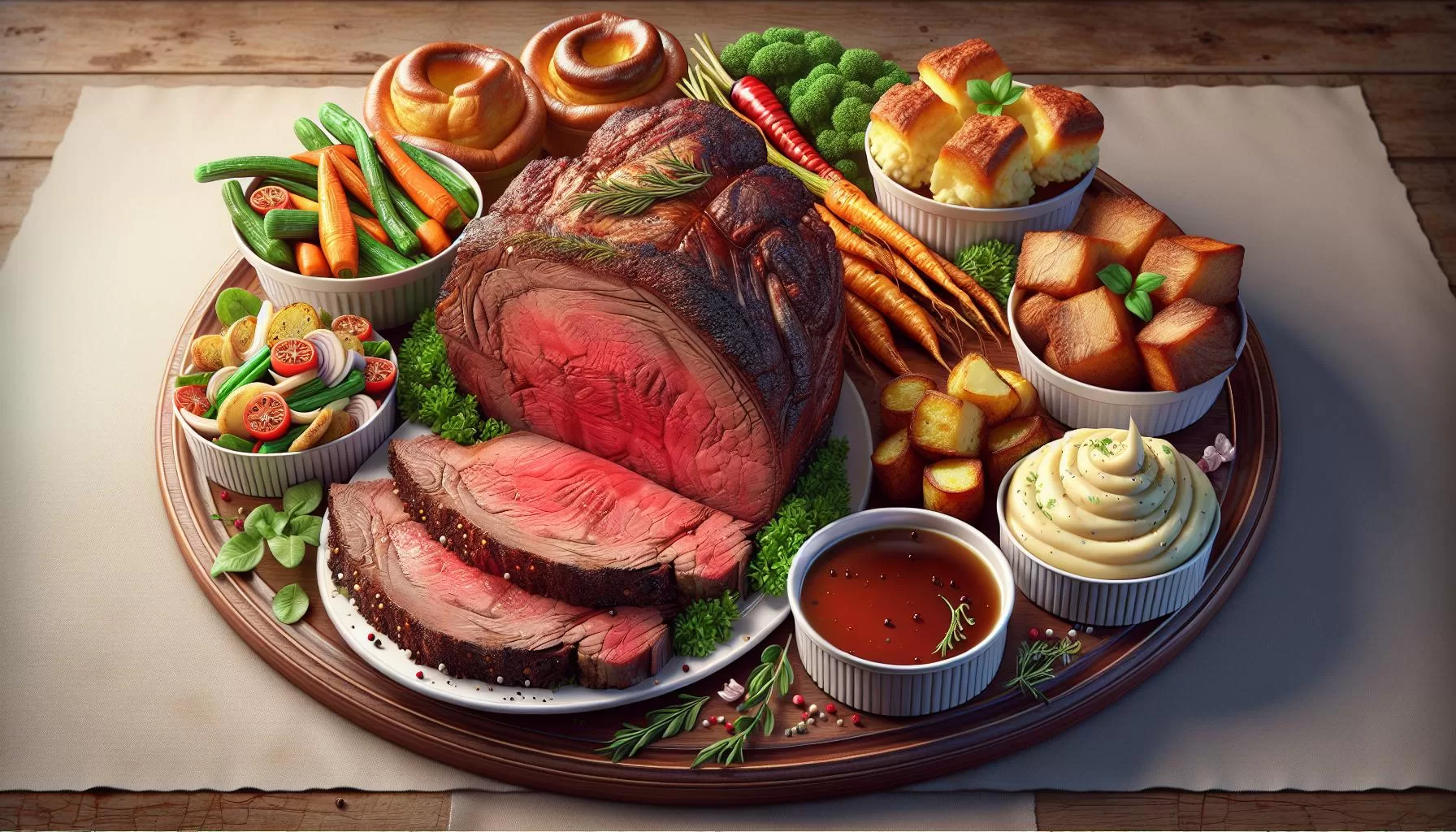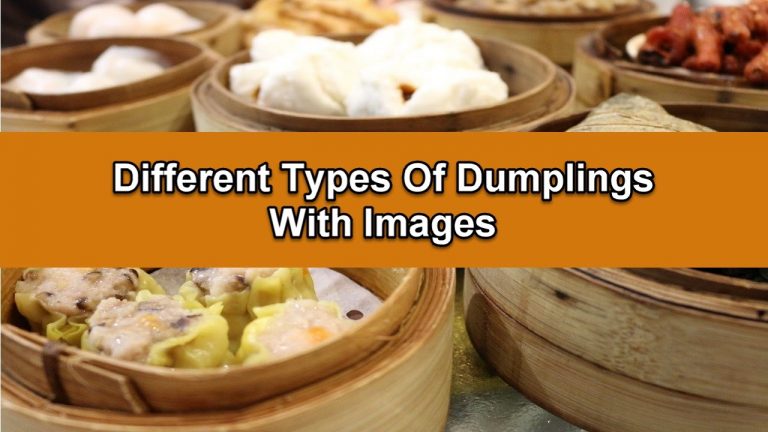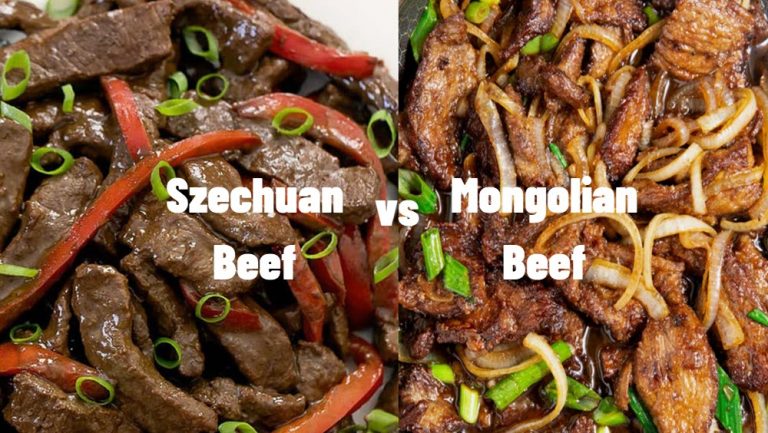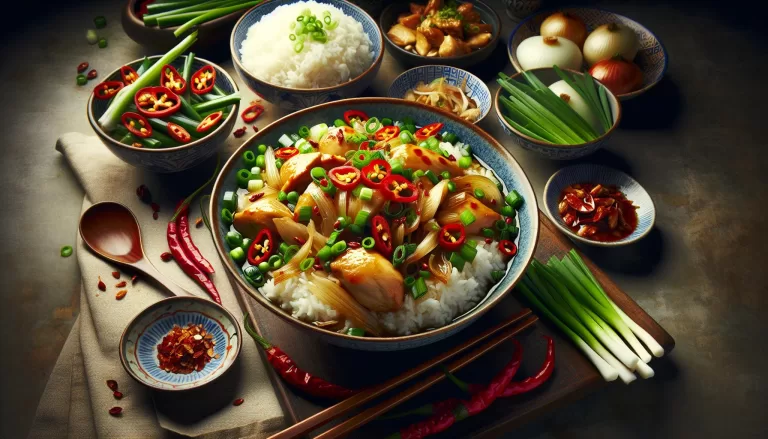Easy and Delicious Homemade Prime Rib Roast Recipe and Serving Tips

Choosing the Perfect Cut of Prime Rib
When you’re aiming to prepare an unforgettable homemade prime rib roast, one essential factor is your choice of meat. Yes, your choice of the prime rib cut can take your roast game to the next level.
Sure, it’s easy to pop into your local butchers and just ask for a prime rib. But you’ll find it more rewarding to understand the details that make the perfect prime rib cut. When you know what you’re looking for, you’ll guarantee a flavorful, succulent roast every time.
Here’s the thing: you’re going to want a bone-in prime rib. There are several reasons:
- Flavor: Bones contribute significantly to the meat’s flavor during roasting. They offer a taste you don’t get with boneless cuts.
- Moisture: Bones absorb some heat during cooking. It results in a slower and more even roast, keeping your prime rib moist.
If you’re feeding a crowd, figure on two people per rib. So, a four-rib roast will generally serve eight people. Pay attention to the marbling, too. That’s the intramuscular fat seen as white streaks in the meat. Higher marbling makes for a more tender and flavorful roast.
Not everyone has access to a butcher. Don’t worry, you can still score a great cut at your local supermarket. Request a “standing rib roast” from the meat department. It’s the same cut, just a different nomenclature.
Speaking of weight, a heavier prime rib doesn’t necessarily mean better. What matters is the quality of the meat. Look for a bright red color with a decent amount of marbling and a layer of fat on one side.
| Factors | Importance |
|---|---|
| Bones | Flavor and Moisture |
| Serving size | Two people per rib |
| Marbling | Tenderness and Flavor |
Navigating the process of selecting a prime rib cut might seem daunting at first. With these insights, you’re well on your way to crafting that delectable homemade prime rib roast to treat your family and friends who’ll be singing your praises till the next holiday season.
Preparing the Prime Rib Roast

Here’s where your culinary journey begins. Let’s get your prime rib roast ready for the oven!
First, you should let your prime rib reach room temperature. Don’t rush this part. It’ll ensure even cooking throughout, guaranteeing a tastier outcome. So, leave your roast out for at least three hours before you start cooking.
Next, seasoning is key. A simple yet robust rub consisting of 4 tablespoons of kosher salt, 2 tablespoons of ground black pepper, and 3 tablespoons of fresh rosemary provides a timeless flavor contrast to the richly marbled meat.
| Ingredient | Quantity |
|---|---|
| Kosher Salt | 4 Tablespoons |
| Ground Black Pepper | 2 Tablespoons |
| Fresh Rosemary | 3 Tablespoons |
Here’s a game-changing tip to add some uncommon flair to your roast: Try mixing in a tablespoon of smoked paprika to your rub. It’s a subtle change, but it gives the crust an enticingly smoky hint that complements the deep, beefy flavors.
| Ingredient | Quantity |
|---|---|
| Smoked Paprika | 1 Tablespoon |
Once your rub is prepared, apply it generously all over the prime rib. Be thorough. Make sure you get it into all the nooks and crannies. If time allows, wrapping the roast in cling film and letting it marinate overnight intensifies the flavors.
Now your prime rib is ready for roasting! As you can see, prepping the roast requires some patience and a fair amount of elbow grease, but it’s a crucial step towards achieving that unforgettable homemade prime rib roast you’re aiming for.
Stay tuned for the cooking process, where we’ll delve into the roasting technique, temperature, and timing that will lead to a seamless, anxiety-free cooking experience, even if it’s your first time making a prime rib roast.
| Nutrient | Quantity |
|---|---|
| Calories | 921 cal |
| Protein | 39 g |
| Fat | 78 g |
| Carbs | 1.2 g |
Seasoning and Flavoring the Roast

Alright! You’ve selected the perfect cut of prime rib. Now let’s delve into making your roast truly unforgettable. When it comes to seasoning, you’re not limited to just salt and pepper. Spice up your prime rib rub with some unique ingredients for a sharper and more intense flavor profile.
Start by patting your roast dry with a paper towel. This crucial initial step ensures the rub adheres to the prime rib. Next, generously salt every inch of the roast. Wondering why? Well, salt is a flavor enhancer. It doesn’t add a new taste but magnifies the meatiness of your roast.
Ready to test your culinary prowess with a unique ingredient? Consider combining garlic powder, onion powder, an out-of-the-box choice like smoked paprika and Cayenne pepper with your salt. Create a dry rub using these ingredients. Please note that each ingredient adds a different flavor, but balance is key. Here’s a guide to proportioning your ingredients –
| Ingredient | Amount |
|---|---|
| Garlic Powder | 2 teaspoons |
| Onion Powder | 2 teaspoons |
| Smoked Paprika | 1.5 teaspoons |
| Cayenne Pepper | 1 teaspoon |
Massage this dry rub onto your roast ensuring every nook and cranny is covered. Make this process a labor of love. The more the rub penetrates, the more flavor-packed your roast will be.
Let’s not forget about marinating! Ideally, let your roast rest, covered in its spicy rub, overnight in the fridge. This long rest allows the roast to absorb the flavors entirely, lending the meat its distinctive taste.
Remember to check your roast’s temperature. Ensuring your roast is at room temperature before you start cooking prevents the meat from cooking unevenly. Allow for about 2 hours for achieving the perfect temperature.
The nutritional value of your prime rib roast might interest some. A 3-ounce serving of prime rib contains approximately:
| Nutrient | Amount |
|---|---|
| Calories | 336 cal |
| Protein | 21 grams |
| Fat | 28 grams |
Sure, it’s rich! But remember for festive occasions and special celebrations, prime rib is the king of the table.
Cooking and Roasting the Prime Rib

Diving into the cooking process, your prime rib roast deserves utmost care and attention. It’s a culinary art that’s well worth the effort, and you’ll feel like a pro in your own kitchen. So let’s get started.
Begin by preheating your oven to 500 degrees Fahrenheit. It’s crucial to cook the prime rib on high heat initially to get the crisp and caramelized outer crust. The high temperature will seal in the juices, ensuring your roast is tender and flavorful.
Next, you’ll need a roasting pan with a rack. Setting your meat on a rack ensures even heat distribution. It also allows the fat to drip away from the meat, which will undoubtedly make your prime rib even tastier.
To create your perfectly-roasted masterpiece, position your roast fat side up on the rack. Cook it at 500 degrees for about 15 minutes to get that robust crust. Then, reduce the oven temperature to 325 degrees and cook your roast for approximately 15-20 minutes per pound. This, of course, depends on your desired level of doneness.
| Desired Doneness | Time per Pound |
|---|---|
| Rare | 15 minutes |
| Medium | 17 minutes |
| Well Done | 20 minutes |
Keep a meat thermometer handy. You’ll want to ensure your roast reaches the desired internal temperature, which is fluctuating from 120 – 160 degrees Fahrenheit, depending on your preference.
| Desired Doneness | Internal Temperature |
|---|---|
| Rare | 120 – 130 degrees Fahrenheit |
| Medium | 130 – 140 degrees Fahrenheit |
| Well Done | 145 – 160 degrees Fahrenheit |
To enhance the flavors, you might consider adding a cup of beef broth or wine to the pan. This not only keeps the meat moist, but it also infuses your roast with additional taste dimensions while it bakes—you won’t be disappointed!
Don’t rush the resting period once your prime rib is cooked. Let it sit for around 15-20 minutes before you start slicing. This allows the juices to redistribute and the proteins to set.
Serving and Enjoying Your Homemade Prime Rib Roast

Revving up your taste buds even more? Yes! Now it’s time to serve and savor your masterpiece.
Once the roast is perfectly cooked and has good rest time, it’s tempting to dive right in. Don’t let that eagerness get the best of you just yet. There’s an art to slicing prime rib, and you would not want to ruin such a glorious piece of meat now, would you?
Begin to slice from the end of the roast, against the grain. Each slice should be about 1/2 to 3/4 inches. Remember, more substantial slices will stay juicy longer. So it’s a non-negotiable suggestion when you’re entertaining.
The way you present your prime rib can elevate the dining experience. Consider placing it on a large wooden cutting board for a rustic look or on a beautiful platter. Sprinkle some fresh herbs around the roast. Not only will this add to the presentation, but the aroma of the herbs will beautifully mingle with the smell of the roast.
But what about the accompaniments? Prime rib is a lavish piece of meat, and it needs sides that can stand up to its rich flavor. Here are a few that do so wonderfully:
- Creamy mashed potatoes
- Roasted vegetables
- Yorkshire pudding
- Fresh green salad
Each of these sides brings something unique to the blending of flavors, balancing out the richness of the beef. And of course, don’t forget about the au jus! Nothing can complement a juicy slice of prime rib better than dipping it into some of its own juices.
Finally, for those with an interest in nutritional value, let’s quickly revisit that. Bear in mind that this is just an approximation. A serving size amounts to 8 ounces of Prime Rib Roast.
| Nutrient | Quantity |
|---|---|
| Calories | 576 |
| Carbs | 0g |
| Protein | 48g |
| Fat | 41g |
Enjoy the act of serving this dish as much as you enjoy creating it. After all, great food enjoyed in good company is one of life’s simplest and most profound pleasures.
Conclusion
You’ve now got the scoop on crafting a homemade prime rib roast that’s sure to impress. Remember, it’s not just about the roast itself, but also how you slice and serve it. Cutting against the grain is key to unlocking the roast’s full potential, while a beautiful presentation can elevate the entire dining experience. Sides like mashed potatoes, roasted veggies, Yorkshire pudding, and a fresh salad aren’t just extras—they’re integral parts of the meal that balance the richness of the prime rib. Don’t forget the au jus for that extra flavor kick. And while the prime rib is a nutritional powerhouse, don’t get too caught up in the numbers. Enjoying the process, from the cooking to the serving, is what it’s all about. So go ahead, savor every step and every bite of your prime rib roast journey.





